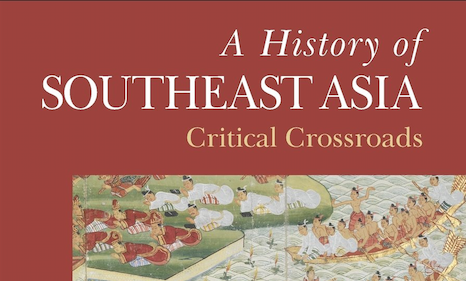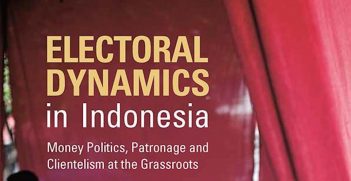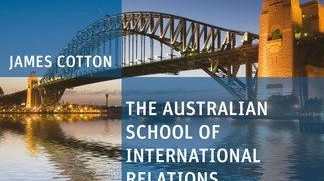A History of Southeast Asia: Critical Crossroads

I first read this book in the warm humid climate of northern Queensland. As in Java, volcanic activity early in the earth’s history has left rich, fertile soil where grains, fruit and vegetables thrive. Rainfall can be plentiful or sparse; irrigation and water control are the keys to taming nature’s whims. This setting was just right to appreciate Tony Reid’s comprehensive, detailed and readable history of Southeast Asia. The book begins with a discussion of the people inhabiting the region’s humid tropics. As with many studies of the past being written today, climate and geography are not mere backgrounds but causal in human history.
Among the book’s many virtues is Reid’s ability to break down the two thousand years he had to cover in order to guide the reader through space and time. He encapsulates periods concisely in chapters of modest size. The charter era; gunpowder kings; becoming a tropical plantation; the last stand of Asian autonomies; the victory of the nationalist idea in the 1930s; the military, monarchy and Marx; and the making of nations and making minorities are just some of the themes pursued in this book. Without fussing about overlaps and exceptions, he divides the region’s religions five ways: the Islamised south; the Theravada Buddhist north; the Christianised east; Confucian Viet culture; and older Southeast Asian religious practices. Some readers will recognise the Age of Commerce (1580-1630) as the book’s centre of gravity but considering the geographical and temporal challenges he faced, I felt the coverage was remarkably even.
Reid says Southeast Asia is not India and not China but in doing so, asserts that the region cannot be understood without considering these Asian giants. Interactions with India and China are one of the book’s strongpoints, although I thought that the analysis of the relationship with China was more insightful than with India. To come to terms with the complexities of the twentieth century, he defines and develops an idea of Southeast Asian modernity by making comparisons with early modern Europe. In one of his most ambitious statements, this comparison leads him to state that the region played the most central role in world history as a crucible for the birth of modernity and the unification of markets. Women were especially vital in Southeast Asian economies as traders, healers, therapists and occasionally, rulers.
Many readers will turn to the index to find their way around, and while it is said you can’t tell a book by its cover, can you tell a book by its index? In this case, I found the index fuller than most; its strengths and weaknesses reflect those of the book. Peasants? No peasants. Instead, we find peasantisation- the process by which colonial and non-colonial governments ‘stuffed all the extra people into agriculture’ to spur economic growth and exports. In light of Reid’s accomplishments in economic history, it is not surprising to see many entries for commodities such as metals– iron, silver, gold, copper – but no entry for metal-working. Slaves? Yes, but no entry for debt bondage, a practice that in modern times has led to human trafficking and prostitution. Military or military rule? Not there, but individual countries have entries under army. Other historians would have paid more attention to anthropological and sociological contributions to the region’s history. Hierarchy and social structure have no entries.
Written in a straightforward, no-nonsense style, the book will be accessible to many, with judiciously chosen quotations to enliven the story. Author-date-page citations appear here and there but the absence of footnotes keeps things moving. That’s right, no footnotes! Irritating academic writing tics have been eliminated; the sentences and paragraphs move effortlessly from one to the other without a noisy grinding of gears. One sentence makes its point eloquently in four words: Early modernity had begun.
Reid’s book is marketed as a textbook in Blackwell’s series on the history of the world, so researchers, teachers and university students will certainly consult it. On the chilly June night in Canberra when it was launched at the Asia Bookroom to an audience of members of the public, academics, students and a few former ambassadors, it quickly sold thirty copies.
What kind of a historian dares to write a book like this, or is able to? Certainly a knowledgeable one. Not everyone knows, or knows how to find out, that coffee was introduced to Europe in 1669 as a medicinal drink by the Turkish ambassador in Paris. Reid is not quarrelsome, not in this book anyway, and his good manners will earn his readers’ trust. The historian of this book also has to be bold enough to take chances and attempt concise generalisations about entire centuries and convoluted social and political movements. Discipline, doubtlessly tinged with regret, is also required to leave stuff out knowing grumpy specialists will demur. If you really need to know something not in the book, have a fling on the internet and find out for yourself.
What stands out for me is that the author believes in Southeast Asia as a region in its own right with a distinctive history. He is a Southeast Asian nationalist, to coin a phrase. Over half a century ago an influential article appeared on the possibilities of an autonomous history of modern Southeast Asia. This book by Tony Reid, whose formation as a historian occurred as the new nations of Southeast Asia struggled towards independence from colonial rule after the Pacific war, is a great success at demonstrating that autonomy. Anyone interested in understanding Southeast Asia today should read Reid.
Anthony Reid, A History of Southeast Asia: Critical Crossroads, Wiley Blackwell, 2015.
Professor Craig J. Reynolds is a historian of Southeast Asia with special interests in the social, political and intellectual history of Thailand. He chairs the Asian Studies Series Editorial Committee of ANU Press. This article may be republished with attribution under a Creative Commons Licence.





